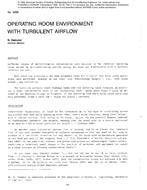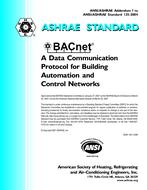Computerized Building Automation Systems (BAS) performs a wide range of functions including the basic functions of data acquisition, alarm reporting, and control of outputs as well as Energy Management programs. A wide range of sophisticated Energy Management programs is usually provided, some of which are listed in Ficture 1. Other functions included in the BAS are fire and security alarm detection and annunciation, and fire management routines for such things as smoke control and access control. These.functions increase system sophistication and the need for a reliable, “easy to communicate with” system. The latest development in these types of systems is distributed processing. Prior to the advent of distributed processing, all system functions were performed by the central computer. This is referred to as a monolithic system. In distributed systems, the functions are distributed to the DGP’s. Implementation of distributed systems varies greatly. At the low end, the DGP may only perform the function of data acquisition and reporting by exception, while at the high end, the DGP may perform all of the Energy Management functions. As can be seen from this brief overview, BAS’s have become more and more sophisticated using one or more computers as well as distributed processing techniques. These are automated systems, but they do require manual access to override programs and make operating modifications. Manual access to the system is required for the functions of commanding points, data displays, logging, schedule modification, and database modification. Generally speaking, the operator interface(I/F)p.rocedu.res for the BAS have not kept pace with the increase in system size and sophistication. The operator I/F must become simpler and easier to use as the system size and sophistication grow. This has not been the case. The remainder of this paper will discuss what may be done to enhance and simplify the operator I/F procedures for larger systems. The conclusion points out that the ideal operator I/F will communicate to the operator in English, allowing the operator to interface to the BAS in understandable terms.
Citation: Symposium, ASHRAE Transactions, Volume 88, Part 1, Houston, TX
Product Details
- Published:
- 1982
- Number of Pages:
- 13
- File Size:
- 1 file , 1.7 MB
- Product Code(s):
- D-HO-82-17-1


